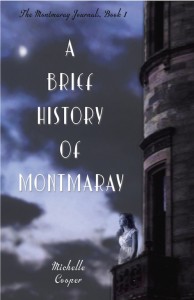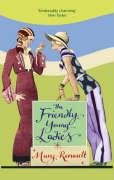When I read books written in the past, I try to keep in mind LP Hartley’s idea that:
“The past is a foreign country: they do things differently there.”
That’s what makes visiting those books so interesting. I can’t help noticing the characters’ (or the author’s) different attitudes to race, gender and social class, among other things, but I don’t tend to get annoyed about the attitudes.
Except when I’m reading a Margery Allingham book.
Right, so my friend H, who shares my love of 1930s British literature, recently acquired some of Allingham’s crime novels. H loved them. I just had to read them, she informed me, because they were so charming and funny. She said she’d send me two of the best ones, although she did warn me that they were “totally politically incorrect”. This turned out to be the understatement of the decade.
 Police at the Funeral, the first Allingham book I read, is actually the fourth in a series featuring Albert Campion, gentleman private investigator. It was first published in 1931, although the edition I read was published in 1965. Apparently Campion is meant to be either a spoof of, or a homage to, Lord Peter Wimsey, and certainly both of these characters are aristocratic, independently wealthy, clever, skilled in martial arts and the use of various weapons, and able to solve the most puzzling mysteries using the tiniest and most ambiguous of clues. In Police at the Funeral, Campion is summoned to Cambridge by an old friend, whose fiancée’s family has been involved in what appears to be a murder. The ancient family matriarch wishes to avoid any hint of scandal and asks Campion to do what he can to solve the crime, or at least, cover it up. Pretty soon, family members are dropping like flies, getting killed in various bizarre ways, and Campion is the only one who can save the family from extinction, or even worse, social disgrace!
Police at the Funeral, the first Allingham book I read, is actually the fourth in a series featuring Albert Campion, gentleman private investigator. It was first published in 1931, although the edition I read was published in 1965. Apparently Campion is meant to be either a spoof of, or a homage to, Lord Peter Wimsey, and certainly both of these characters are aristocratic, independently wealthy, clever, skilled in martial arts and the use of various weapons, and able to solve the most puzzling mysteries using the tiniest and most ambiguous of clues. In Police at the Funeral, Campion is summoned to Cambridge by an old friend, whose fiancée’s family has been involved in what appears to be a murder. The ancient family matriarch wishes to avoid any hint of scandal and asks Campion to do what he can to solve the crime, or at least, cover it up. Pretty soon, family members are dropping like flies, getting killed in various bizarre ways, and Campion is the only one who can save the family from extinction, or even worse, social disgrace!
This leads to the first way in which this book is dated. I know the British class system continues to exist in the twenty-first century, but thank Heavens it’s not as bad as it used to be. Almost all of the characters in this book accept that their position in life is due to the social class into which their parents were born, and that this is how it always has been, and always should be. (The sole exception to this is one of the villains, who comes to the violent end he ‘deserves’.) In this book, working-class characters are consistently depicted as either ugly and violent; ugly and stupid; or ugly but amusingly foolish. In fact, Campion, supposedly the smartest person in the book, firmly rules out the notion that any of the servants of the household could have been involved in the murders. Only someone from the middle or upper classes would have the brains to plan a crime, you see.
But it’s not just the working classes who are stupid and unlikeable. There are also the (upper-middle class) women, who are all either hysterical, shrewish or insane. There is one female university student who seems reasonably sensible, but she doesn’t do much except help her friend each time the friend faints (which is quite often). It’s also firmly stated that this sensible character is not “conventionally beautiful” and that her manners are “startlingly American”. Oh well, that explains it, then.
The worst, though, has to be the attitudes towards race. Remember that recent debate in the United States about banning Huckleberry Finn because it contained a certain word no longer used in polite society? Well, that word is used casually by the characters in this book. I thought that was as bad as it would get as far as ‘political incorrectness’ went, but then a body was discovered by an “Indian student”. I cringed, anticipating the student’s interview with Campion, but in fact, it could have been worse. The student is described as:
“not an attractive person. He seemed to have embraced European culture with a somewhat indiscriminate zeal . . . He was full of his own importance . . . [and had] a gleam of childlike pride in his eyes.”
The reader is meant to be amused by the student, but he does turn out to be an observant and intelligent witness whose descriptions of the crime scene are invaluable to Campion. No, the worst is yet to come, when Great-Aunt Caroline explains why a particular character has been blackmailing her family. As the following is, a) a mild plot spoiler, and b) appallingly racist, I’ve hidden the text. If you’d like to read on, highlight it with your mouse or click ‘Select All’ in your browser:
It turns out Caroline’s husband had a nephew who was
“shipped off to the colonies [that is, Australia] many years ago. He returned with a certain amount of a money and a wife . . . She was a peculiar-looking woman and of a very definite type . . . They had a child, a girl, and when that child was born the rumours that had been rife about the mother were proved beyond a doubt. By some horrible machination of heredity the stain in the woman’s blood had come out . . . The child was a blackamoor . . . They left, of course, and the disgraceful business was hushed up. But to my own and to my husband’s horror, although the first child died, these criminal people had a second. That child was George.”
Even worse, George is “not in the least ashamed” of his “half-caste blood”!
It wouldn’t be so bad if Campion, the hero of the story, thought or acted in any way that showed he disagreed with Caroline’s attitudes. But no, he feels “honoured” that she has confided this family secret to him, looks at her “admiringly”, tells her she’s the “cleverest woman he’s ever met”, and ends the book by describing her as “very beautiful”.
Maybe it’s just because I’m a “colonial” with “half-caste blood”, but this is one of the few scenes I’ve read in recent years where my jaw has actually dropped, and I’ve thought, “How could she write this? How could they publish this? ARRGHH!”
Leaving apart the classism, sexism and racism of this book, I still had difficulties with it. It has one of those convoluted plots that hinge on a series of implausible coincidences. Whenever something illogical happens, it’s due to the murderer being insane. Still, the plot’s no worse than most of Agatha Christie’s novels, and Margery Allingham does have a sense of humour. I particularly liked the dignified dog who insists on shaking hands with Campion, and the ‘mermaid skeleton’ that Campion unwillingly acquires as a reward for his endeavours. The characters may be annoying, but some thought has gone into making them rounded and interesting. Fans of 1930s murder mysteries may well enjoy this, even if I didn’t. For example, this reader felt that the book was “extremely well-written”, although he acknowledges that Allingham is an “acquired taste”.
I must also add that I later read Allingham’s Mystery Mile, the first in the Campion series, for comparison purposes. There was still a bit of racism and classism, but I enjoyed this book far more, perhaps because there was more humour, a more interesting and plausible mystery, and a greater opportunity to get to know Campion and his factotum, Lugg. On the whole, though, I don’t think I’ll be actively searching for more Allingham books. Sorry, H.
More ‘dated’ books:
1. Wigs on the Green by Nancy Mitford
2. The Charioteer by Mary Renault
3. The Friendly Young Ladies by Mary Renault
4. Police at the Funeral by Margery Allingham
5. Emil and the Detectives by Erich Kästner
6. The Wind in the Willows by Kenneth Grahame
7. Swallows and Amazons by Arthur Ransome
8. Kangaroo by D. H. Lawrence





